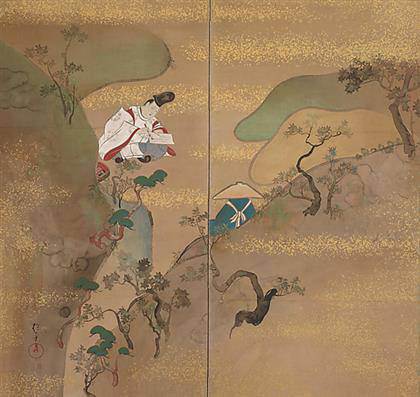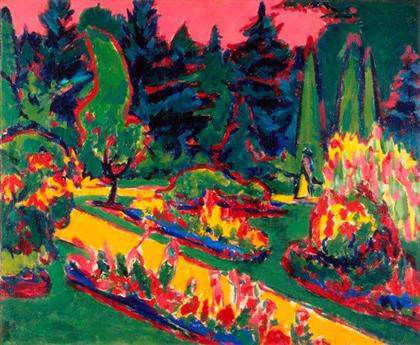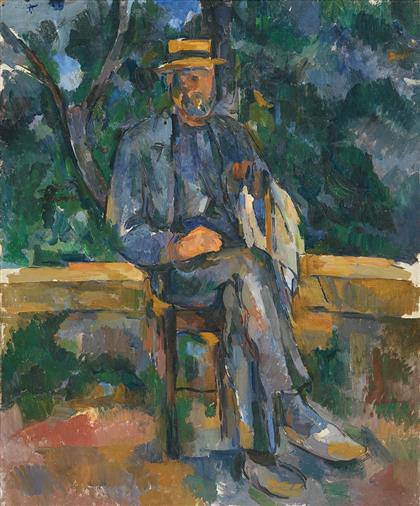
Sakai Hōitsu (Japanese, 1761–1828)
The Ivy Way Through Mt. Utsu (Utsu no hosomichi)
Metropolitan Museum of Art, New York
Flowering of Edo Period Painting – Metropolitan Museum Metropolitan Museum of Art presents ‘The Flowering of Edo Period Painting: Japanese Masterworks from the Feinberg Collection’. February 1 – September 7, 2014.]]>
Source: Metropolitan Museum of Art
“The Flowering of Edo Period Painting: Japanese Masterworks from the Feinberg Collection” draws on the holdings of noted American collectors Robert and Betsy Feinberg, who have created one of the premiere private collections of Japanese painting from the Edo period (1615–1868) outside Japan. Displaying exemplary works from painting schools that arose in Japan in the 17th and 18th centuries, the exhibition allows viewers to discover how Japanese painting evolved from the traditional modes of Chinese and Japanese (Yamato-e) styles that had prevailed through medieval times. More than 90 paintings —including 12 sets of folding screens and a number of hanging scrolls— are exhibited in two rotations, each consisting of approximately 45 paintings.
The exhibition presents a full range of highlights from the Feinberg Collection for the first time. It was on view recently in museums in Tokyo, Kyoto, and Tottori City, Japan, before traveling to the Met. A scholarly catalogue in both English and Japanese accompanies the exhibition. For the exhibition at the Metropolitan Museum, each rotation is complemented by textiles, ceramics, lacquerware, and woodblock-printed books from the Museum’s own holdings.
With works of nearly every major Edo painter represented, the exhibition serves as an excellent introduction to Edo painting in its entirety. While examining the stylistic innovations, the paintings on view capture compelling scenes of nature, people at work and play, and scenes drawn from East Asian history, legend, and literature. Highlights include the hanging scroll Tiger, a tour-de-force of ink painting of the early 1630s by Tawaraya Sōtatsu, founder of the Rinpa school. They also include especially fine examples of the 19th-century Edo Rinpa-revival painters Sakai Hōitsu and Suzuki Kiitsu, respectively represented by a rare set of a dozen hanging scrolls of Birds and Flowers of the Twelve Months and a graphically potent pair of two-panel folding screens of Cranes. Works by such 18th-century Kyoto masters as Ike no Taiga, Yosa Buson, Soga Shōhaku, Maruyama Ōkyo, and Nagasawa Rosetsu are a special strength of the collection. Ukiyo-e artists known best in the West for their woodblock prints are represented by meticulously detailed paintings thought to have been commissioned by wealthy clients. A pair of 17th-century folding screens showing a Portuguese trading ship and the antics of its sailors testifies to the fascination the Japanese had with the arrival of the first European traders on their shores toward the end of the 16th century.
Related content
The American West in Bronze – Metropolitan Museum (exhibition, 2014)
Follow us on:


